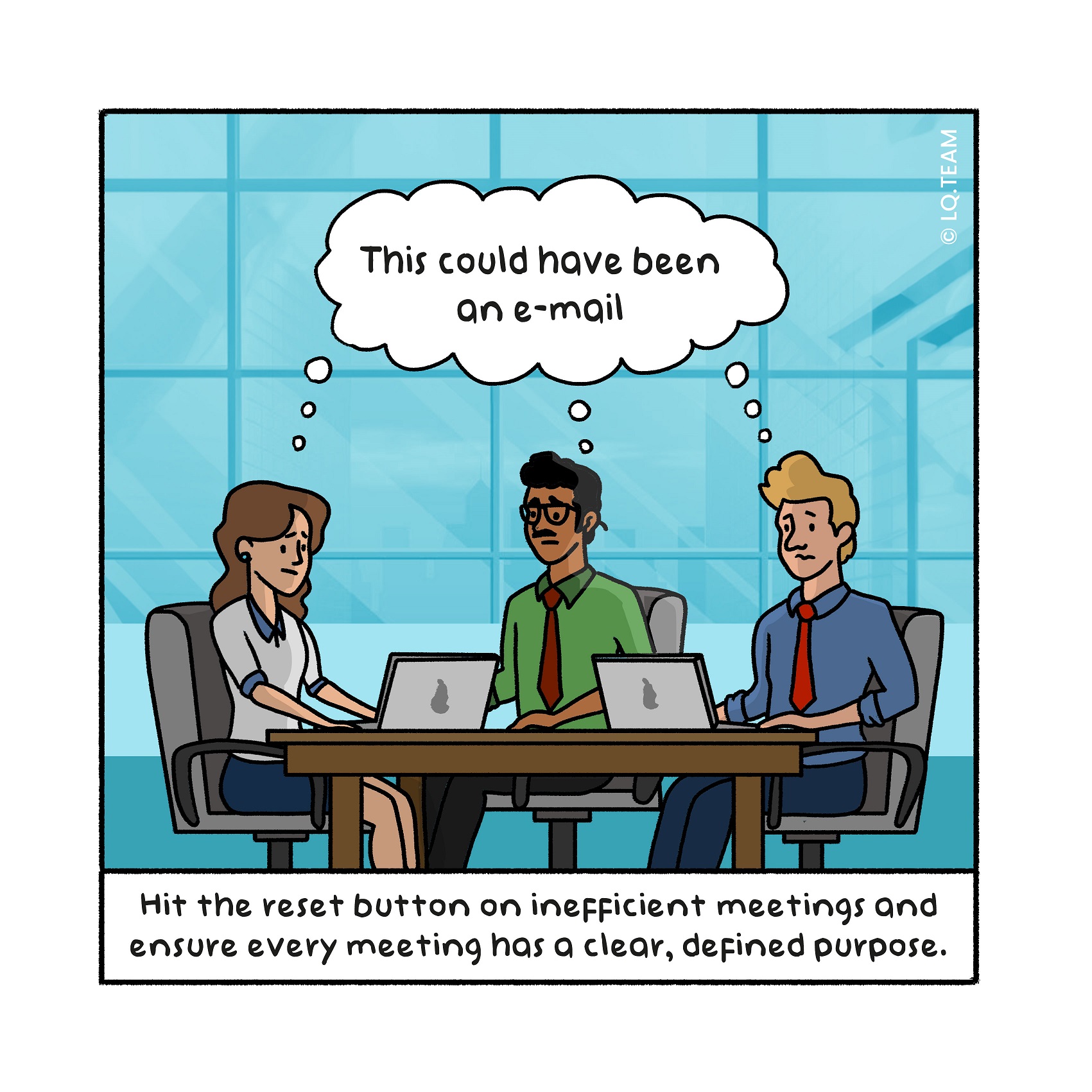
Nut to crack: How do you get rid of an inefficient management meeting structure?
I have yet to meet an organisation that doesn’t strive to be more results-driv- en. Similarly, I have yet to meet an organisation where unproductive meetings do not exist. Nobody wants that, but it still happens. It’s frustrating, and it drains energy, but it is persistent. How can you break the pattern?
Nutcracker: Push the reset button
Though there might be some meetings beyond your circle of control, like performance reviews or board meetings, you can make a difference as a change leader.
Use the following principles in the meetings you can influence directly:
- Eliminate wasting time in and with meetings; time is money
- Sharpen roles and responsibilities and clarify who needs to be present for what; meetings have a purpose which determines which people need to be there, and this can result in people joining or leaving with every change of subject
- Make people more vigilant: never accept a meeting without knowing its purpose
- Simplify: find ways to streamline the meeting structure; what is the neces- sary rhythm?
- Promote speed and fact-based decision-making; a simple rule of thumb like “we will have a maximum of two meetings to come to a decision” can help with this
- Display role model behaviour: what you choose to accept or not as a lea- der becomes amplified in the rest of the organisation
Agile working practices, such as scrum meetings or daily stand-ups can en- hance productivity when used correctly. In addition, to truly make a differ- ence, you may need to act rigorously. Cancelling a whole string of meetings from one day to the next can seem brutal, but it has proven to be a compelling example of breaking with set meeting patterns. The following case shows how and with what result.
Real-life example: It’s your actions that make a difference
A business unit manager from the service industry feels annoyed: meetings are long and poorly prepared, roles are unclear, and decisionmaking is slow. He wonders how to break this pattern. Using the example of what he witnessed one of his previous bosses do, he decides to take a chance.
From one day to the next, he cancels all the internal meetings on his agenda. He explains that he only wants to meet when there is a clear purpose. This means he doesn’t want any recurring internal meetings in his schedule apart from the weekly 30minute Tues day meeting where the entire team is present, in person or online. In this meeting, they reflect on the last week and plan the coming week around a digital planning board with key performance metrics and results.
A standing table replaces the meeting table and chairs in his office, and he encourages everyone to feel free to plan meetings with him based on the subject matter and de sired results. His agenda now has many open spots. These meetings can take either 10 minutes, 45 minutes or an hour and a half, depending on the subject and the purpose of the meeting. He finds that sessions that last an hour are too long to fit the purpose or too short. These new timeslots make his coworkers reconsider how much time they need, and the routine of hourlong meetings is broken. He then fundamentally changes his meeting behaviour. He habitually ends any discussion which is not prepared; the purpose must be clear, the facts must be presented, and it must be a subject within his remit. By structurally behaving this way, he sees other managers who report to him follow suit, become more effective in their meetings with him, and change their meeting structures. His example causes a ripple effect.
Tip for change leader
A systematic redesign of the management infrastructure typically leads to increased productivity. By reviewing and aligning all set meetings needed for business planning and business performance reviews in terms of agenda, time and day, the organisational energy can flow (again).
Tip for change enabler
One simple twohour session in which you evaluate the meeting infrastructure and be haviour with all parties involved will typically deliver immediate benefits in terms of time, effectiveness and fun. List all meetings, adding purpose, duration, attendees and immediate usefulness. Rank them from high to low. Make choices on which to stop, which to change, which to start and which to continue. Less is more.
Kernel: Less is more
Meeting routines and behaviour tend to develop over time. In general, not every meeting is practical and necessary, but it is difficult for individuals to break these routines. You can make a difference as a leader by setting ex- plicit examples like cutting meetings and using your time more efficiently. This paves the way for others to do the same. Agile working practices can contribute to enhanced productivity; leverage those.
